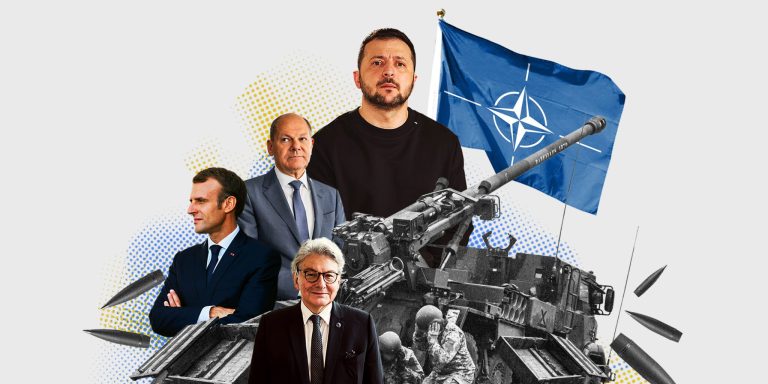Robert Barca (ICJK)
Daniel Flis (FRONTSTORY.PL)
Cover: Toom Tragel /Delfi Estonia 2024-07-25
Robert Barca (ICJK)
Daniel Flis (FRONTSTORY.PL)
Cover: Toom Tragel /Delfi Estonia 2024-07-25
European Commission claims that by the end of 2024, the European arms industry can produce 1.4 to 1.7 million rounds of 155 mm caliber artillery ammunition, which meets NATO standards and is absolutely crucial for Ukraine.
However, actual production numbers are estimated to be closer to a third of that, or at most six hundred thousand rounds.
Together with our media partners from across Europe, we have assessed European weapons capabilities and the gap between political promises and reality.
Key issues include insufficient factory capacity, a shortage of raw materials, and inadequate financial resources.
VSquare’s regional round-up focuses on the current state of ammunition production in Poland, the Czech Republic, and Slovakia.
“We can hit any target—bunkers, shelters, trenches, and vehicles, whether heavy, medium, or light, even infantry. We can hit any target, except, of course, air force or air targets,” says Artur, a commander of the Polish-made AHS Krab self-propelled howitzer and a member of the Ukrainian army’s 40th artillery brigade operating in the Kharkiv region.
Until the Russian invasion in 2022, the Ukrainian army had only Soviet-style 152-millimeter howitzers. However, allies have supplied the defending Ukrainians with hundreds of modern Western guns, including Slovakian-made Zuzana howitzers, which fire 155-millimeter rounds. Therefore, artillery ammunition has become crucial for countries supporting Kyiv.
Soon after the conflict began, it became clear that the West wasn’t producing enough artillery ammunition for wartime use. By late 2023 and early 2024, the Ukrainians faced a critical shortage of artillery shells. This shortage contributed to the loss of Avdiivka, which the Russians captured in February. At that time, the Ukrainians fired 2,000 shells per day, while the Russians fired more than 10,000.
“We already have ammunition in stock, but we are not firing as much as we could,” says Anton, a Ukrainian artilleryman operating a Swedish Archer self-propelled gun in the Donetsk region. He adds that the supply situation is generally improving, albeit slowly, after the switch to Western systems.
Meanwhile, Europe must prepare for the possibility that Donald Trump, who has suggested he might stop aid to Ukraine, could be elected US President in the November elections. If this happens, most of the aid to the defending Ukrainians would then fall on the shoulders of the EU, including the supply of artillery ammunition.
Even without the issues that could come with Trump’s presidency, the U.S. may have problems with deliveries as well.
Last week, Reuters published an investigation showing that the US arms industry is unable to meet Ukrainian demand for artillery munitions. Total U.S. monthly shell production might jump from 36,000 to 60,000 by year’s end. The reason is not only delays in approving aid funds for Ukraine, but also ‘a decade of strategic, financial and manufacturing errors’. Example: U.S. planned to import the explosive TNT used in artillery ammunition from a factory in eastern Ukraine. Which was seized by Russia early in the war. Nowadays the U.S. imports TNT from Nitro-Chem, a state-owned company from Bydgoszcz in Poland, “the last surviving TNT plant in Europe or North America”.
Currently, Europe’s support for Ukraine is secondary. Volodymyr Zelenski admitted as much in an interview with the Washington Post in March: “The lack of U.S. support means we have no air defense, Patriot missiles, electronic warfare jammers or 155mm artillery shells.”
According to figures released by the US government, the US has sent more than 3 million 155mm artillery shells to Ukraine since the start of the invasion, as well as more than a million other large-caliber shells. The Ukrainian Defense Ministry says it has received just over half a million shells of various calibers from the European Union during the same period.
Our international investigation suggests that, despite the promises of EU leaders, European industry is failing to meet munitions production requirements.
Czech Republic takes the initiative
At the beginning of 2023, the EU found itself in a dire situation where none of the joint initiatives to supply large-caliber ammunition to Ukraine from European sources were working as expected. There was an “ammunition famine,” warehouses in Europe were empty, the US Congress blocked further financial aid to Ukraine, and experts spoke of a “desperate situation.”
According to government commissioner Tomáš Kopečný, at that time the Czech Republic had already had a functioning partnership with the Netherlands and Denmark for a year. “By the end of June, we had delivered 1.85 million rounds of ammunition thanks to that,” Kopečný says of the rounds sent to Ukraine outside of any EU initiative. “All this January, the question was why the European Union was not able to deliver the promised one million pieces of large-caliber ammunition,” he adds. This desperate situation, coupled with the working partnerships, reportedly led to the public announcement in February of a “Czech Ammunition Initiative” within the EU, to which eighteen states have so far joined (three of which are to contribute in non-financial ways).
In April, the Czech Ministry of Defense announced that the initiative had already financially covered half a million munitions and that by the end of the year, this would be eight hundred thousand. Shortly before that, Prime Minister Petr Fiala had spoken of up to one million. Now, the goal is to supply Ukraine with half a million pieces of large-caliber ammunition by the end of the year. According to Defence Minister Jana Černochová, this amount is already “financially covered.” At a press conference at the end of June, she and the Czech prime minister announced that the first batch—fifty thousand rounds paid for by Germany—had already arrived in Ukraine and that further deliveries of tens of thousands of rounds would follow every month.
However, one catch is that the half a million pieces of “financially covered” ammunition include pledges. According to our information, the necessary money has not yet been sent by half of the countries that have made similar promises. “In the last three months, some other countries have joined in, but it is frustrating because they say they will send something and then send nothing,” explains Tomáš Kopečný.
Investigace.cz calculates that, thanks to the Czech initiative, over 1.3 billion euros have been collected so far. This amount would be enough to buy approximately 413,000 pieces of 155 mm caliber ammunition, based on the price of EUR 3,211 per piece, which Germany has already paid for under the Czech initiative. However, this amount may no longer correspond to the current market reality.
On the other hand, it is not clear how the money flows under the Czech initiative or where the ammunition comes from. All this is subject to secrecy. “There are several options and each country decides independently. Some want to buy individually, others jointly,” Czech national security advisor Tomáš Pojar told investigace.cz about the Czech Republic’s position as a mediator. It is no secret that the “Czech initiative” consists of close cooperation between the state and arms companies, mainly STV Group and Czechoslovak Group.
“Each donor of funds decides how much and what exactly to buy. It depends on the age of the ammunition, its quantity and range, the distance of its source, the type of transport, or even whether (and where) it is necessary to pay VAT. There is plenty of ammunition on the world market,” Pojar said, adding that if European companies are unable to meet the demand, there is no problem buying outside Europe. According to Pojar, the political orientation of a given country does not play a significant role. “It doesn’t mean that if you have the finances, anyone will sell you ammunition, but there are many business partners in this market today.”
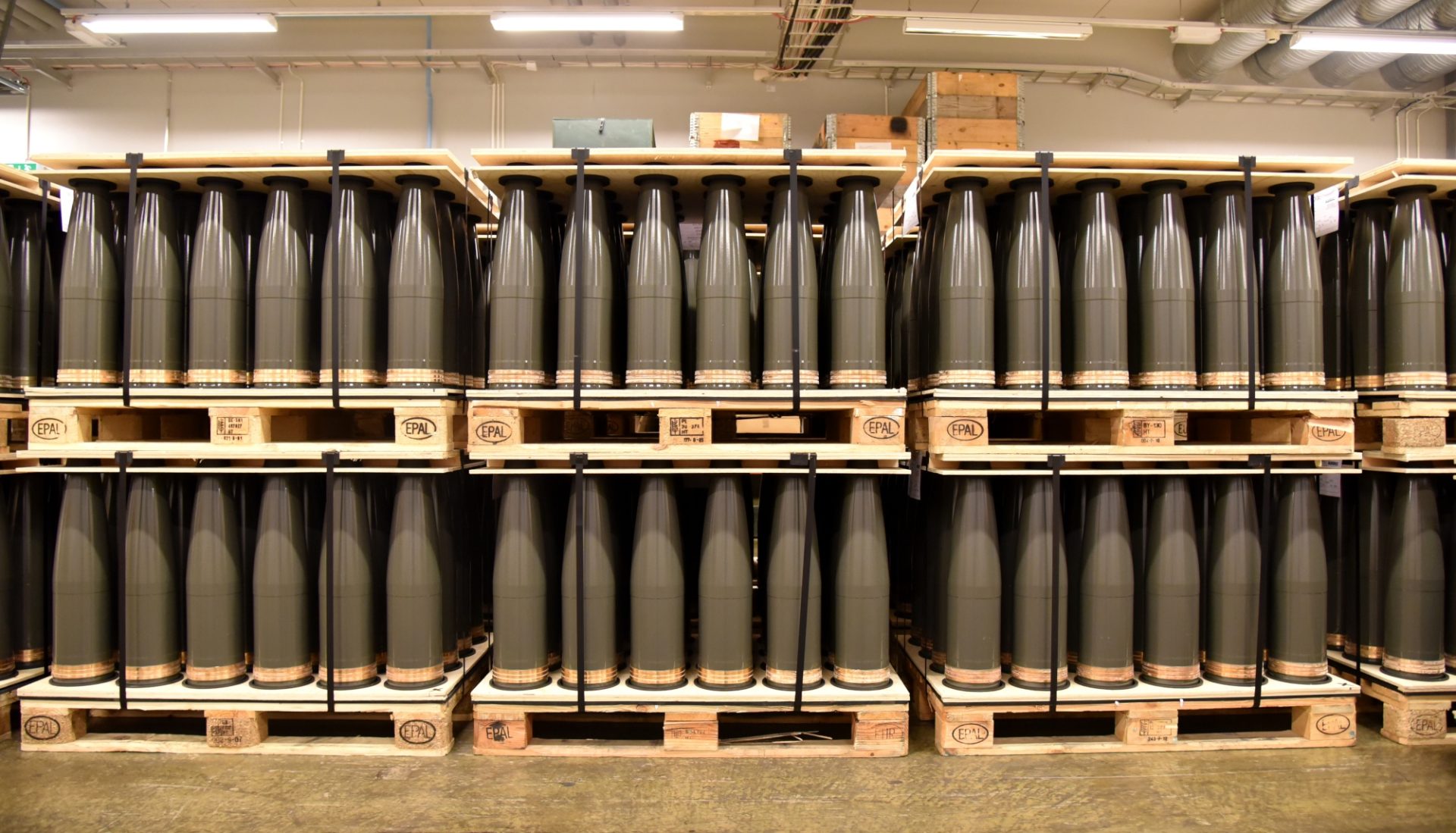
Slovak arms factories ramping up production
In Slovakia, the main producer of artillery ammunition is the semi-state ZVS Holding in Dubnica nad Váhom. Half of its shares are owned by the state-owned DMD Group, with the other half owned by the Czechoslovak Group (CSG) of Czech arms tycoon Michal Strnad, which manages it through its subsidiary MSM Group. The private company has managerial control in ZVS, managing it directly.
CSG acquired a stake in ZVS in 2015 during the tenure of Martin Glváč from Smer as Minister of Defense. ZVS was purchased from Miroslav Solava, who ran the company for almost 20 years. In 2020, Solava was implicated in a corruption case involving Kajetán Kičura, the former head of the State Material Reserves Administration. Along with Solava and Kičura, police also charged Marian Goga, the former CEO of MSM Group.
Strnad’s group received support from Minister Glváč ahead of the 2016 parliamentary elections when, four days before the elections, he concluded a secret contract for 27 million euros for the modernization of BVP transporters, with MSM Group as the main subcontractor.
Before the war in Ukraine, ZVS produced up to 20,000 155 millimeter shells annually. Now, it is investing more than 100 million euros and aims to increase production to more than 120,000 shells. CSG’s portfolio includes more than 100 companies, such as the Tatra automotive company and the Czech howitzer manufacturer Excalibur Army. It also leases repair facilities in Trenčín and Nováky from the Slovak state.
The semi-state firm might not be the only producer of artillery ammunition in Slovakia. Recently, information emerged about an investment plan for a plant in Sobrance to produce metal bodies for artillery shells, backed by a company linked to a Ukrainian businessman and former member of the Verkhovna Rada.
Robert Kaliňák, as Interior Minister under the second government of Robert Fico, purchased 166 Tatra firefighting vehicles for over 20 million euros. In 2019, Kaliňák established his own company, Liwa Arms Slovakia, based in the ZVS Holding building in Dubnica nad Váhom. After the 2023 elections, Kaliňák became Minister of Defense. Less than a month after the government’s appointment, he replaced the head of the state-owned DMD Holding, Štefan Škultéty, with his long-time acquaintance Miroslav Sim, who is also a member of the ZVS supervisory board. Additionally, in February 2024, Martin Vojtašovič, a former senior manager of the MSM Group, became the second secretary of state for the defense ministry.
In addition to ZVS, the MSM Group also includes VOP Nováky, which has long been engaged in the repair and restoration of decommissioned or spent ammunition. Today, it also focuses on producing smaller 122 mm caliber ammunition, mortar rounds, and rocket launcher rounds. An MSM spokesperson claims the group’s production capacity is now ten times higher than before the war in Ukraine. However, neither MSM nor CSG officials have specified whether this capacity includes only Slovak munitions plants or also their Spanish factory. They stated only that MSM is “investing more than 100 million euros” in its Slovak plants in Dubnica nad Váhom, Snina, and Nováky.
In Snina, MSM produces the steel bodies of artillery shells, with final assembly and explosive filling taking place in Dubnica. According to CSG’s 2023 annual report, following the investment in a second assembly line in Snina, “production of large-caliber ammunition bodies has almost tripled.” If successfully implemented, the investments will “provide an annual production capacity of up to 120,000 units of large-caliber ammunition.” However, it is unclear how much of this production is new ammunition and how much is remanufactured.
Experts disagree on the actual capacity of MSM’s artillery ammunition production today. Colonel Bobal told ICJK that ZVS is still the only manufacturer of 155 mm rounds in Slovakia. “The current production capacity of 155 mm artillery shells at ZVS is approaching—or there is a great effort to make it approach—100,000 pieces per year,” Bobal said. Former defense minister Martin Sklenár, who served in the caretaker government before the 2023 snap elections, estimates the current capacity of ZVS at around 60,000 pieces, with plans to double to 120,000 next year.
A well-informed source from the Slovak artillery industry told ICJK, “As far as I know, ZVS still produces about 50,000 rounds. They would like to increase it to about 150,000, but the delivery of machines and new technologies needed for the capacity increase is delayed. So I think they will be able to do it in a year at the earliest.”
At the end of June 2024, an investor announced plans to build a factory for producing artillery shell bodies in Sobrance, near the Slovak-Ukrainian border. The joint Ukrainian-Slovak venture in Sobrance is expected to be worth 14 million euros. Košice-based Arm Servis s.r.o. has submitted the project for an environmental impact assessment (EIA). This company is owned by SK Special Goods Trading, backed by UA Special Goods Trading, based in Florida, USA. Its ultimate beneficial owner is Lyubov Borisovna Yefimova, the mother of former Ukrainian MP, a big businessman in the metallurgical industry thanks to the Kramatorsk plant and, according to Forbes magazine, the 51st richest Ukrainian (in 2021), Maxim Viktorovich Yefimov, according to the Florida Business Register. He has previously bought a department store in Kiev through his mother.
According to the EIA documentation, the plant in Sobrance, to be called Cylinder Factory, will produce 100,000 steel barrels for 122 mm and 155 mm calibers. Ivica Bucova, Managing Director of Arm Servis s.r.o., told ICJK by phone that they plan to start production in the second half of 2026 or 2027 at the earliest.
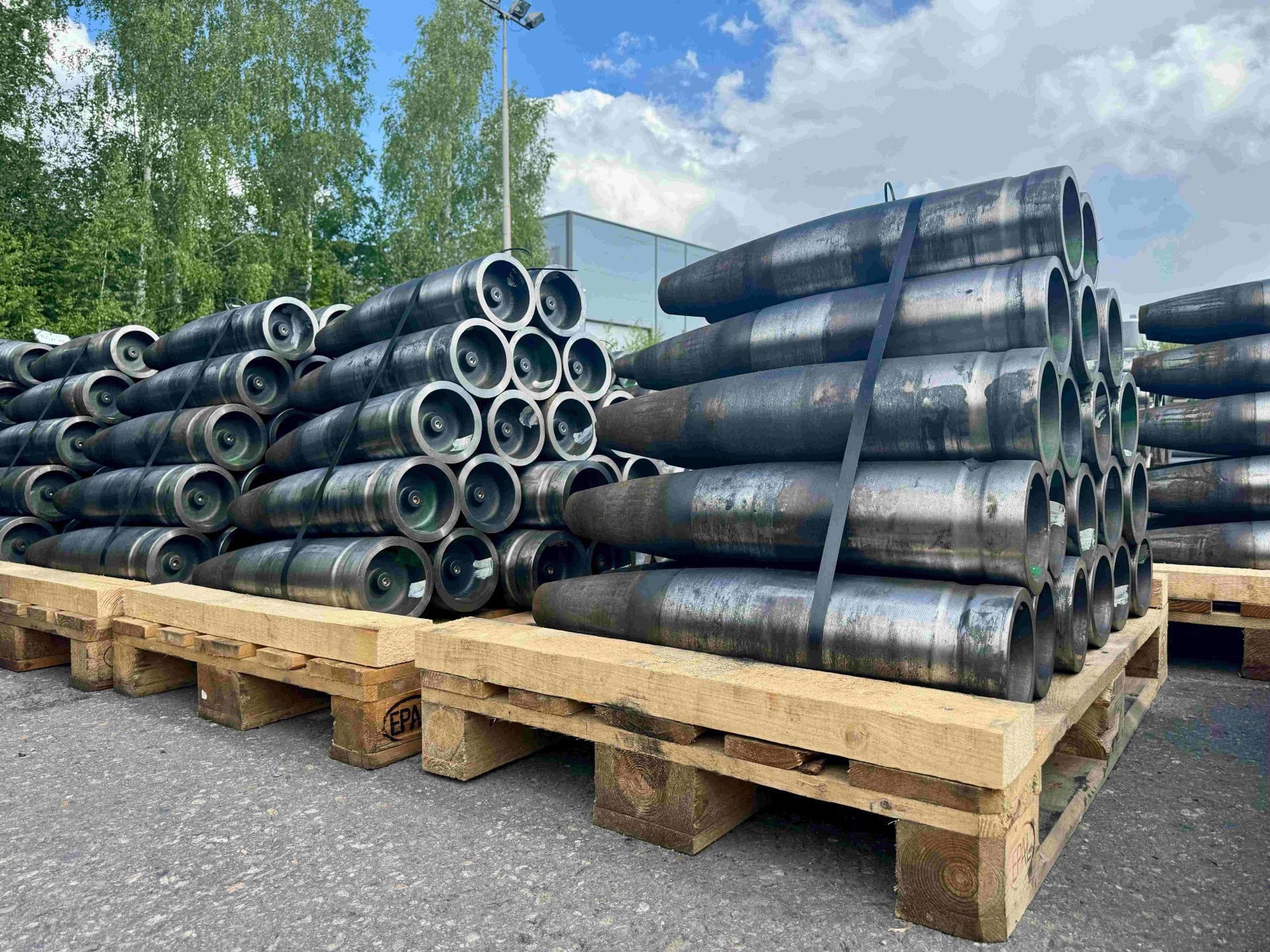
Poland: Farewell to Arms or New Armaments?
In Poland, 155mm munitions are supplied exclusively by companies within the state-owned Polish Armaments Group (PGZ). In May 2023, PGZ’s then-chairman, Sebastian Chwałek, announced that the group could produce 30-40 thousand rounds per year. “Ultimately, we want to increase capabilities to over 200,000 units per year,” Chwałek assured in an interview with PAP.
At the time, Chwałek was counting on funding from the ASAP (Act in Support of Ammunition Production) program, in which the European Commission allocated 500 million euros for developing 155mm caliber production capacity. However, by March 2024, it was revealed that only 2.1 million zlotys from this pool would go to Poland, specifically to Dezamet.
“For the most part, our state-owned defense companies are in a bad situation in terms of technology and management culture,” explained Michał Dworczyk, a former deputy minister of national defense and head of Prime Minister Morawiecki’s chancellery, who created the defense analysis department there. “Given this, it is difficult to expect a company that is barely able to assemble, from components purchased abroad, some 30,000 missiles a year, to apply for funding for the production of several hundred thousand units. Besides, I get the impression that the issue did not have a political host behind it. In our time, as now, the Ministry of Defense competes with the Ministry of State Assets for influence over arms companies, and as a result, many issues are handled inefficiently. On the other hand, all Western companies have been trying to get these funds for themselves and have had strong lobbying from their governments,” Dworczyk told FRONTSTORY.PL.
Chwałek could also count on the National Ammunition Reserve (NRA), a program announced by Prime Minister Mateusz Morawiecki in March 2023. The government was to allocate PLN 12 billion for purchasing 155mm ammunition and an additional PLN 2 billion to increase production capacity. Contracts were supposed to be signed in fall 2023.
In December 2023, under the NRA, the PGZ-Ammunition Consortium and the Armament Agency signed a contract for nearly 300,000 155mm rounds worth almost PLN 11 billion, to be delivered between 2024 and 2029—50,000 units per year. But does PGZ have this production capacity? “Due to the sensitive nature of defense activities, the volume and pace of production, as well as work organization details, are not public information,” wrote Beata Perkowska, head of PGZ’s communications department.
“In 2022-2024, nearly PLN 3 billion was allocated for the purchase of 152 mm and 155 mm caliber ammunition,” commented a spokesman for the Polish Armaments Agency in response to FRONTSTORY.PL’s inquiry about recent purchases.
Some experts have doubts that Poland can produce even 30-40,000 rounds. Pawel Poncyljusz, formerly a Law and Justice politician, now with Civic Platform, and the current chairman of Polska Amunicja (Polish Ammunition) company, claims that realistically PGZ is capable of producing up to 10 thousand 155mm ammunition.
“The overall capacity is about 30 thousand, but it works like a logarithmic slider. That is, if Dezamet [a subsidiary of PGZ] wants to produce more 155mm ammunition, it will produce less 120mm ammunition,” Poncyljusz said in an interview with FRONTSTORY.PL.
Besides, PGZ is not able to produce ammunition entirely on its own.
“Those 30,000 rounds a year are mostly assembled in Poland from imported components. If any of the suppliers stopped deliveries for political reasons, it would be impossible to produce ammunition in Poland,” Poncyljusz explained.
When will PGZ get the NRA funds for increasing production capacity? According to information shared with us on background, nothing had changed by early July, and PGZ needs up to PLN 3.5 billion for necessary investments.
According to sources familiar with the company’s operations, PGZ is in talks with several leading manufacturers on the purchase of licenses. They are to be finalized at the international arms fair in Kielce in September. From then on, it will have to wait up to 18 months for the launch of new production lines.
Private and semi-private companies are also counting on money from the NRA. Polska Amunicja, 51 percent owned by the Industrial Development Agency, plans to produce 100 to 150 thousand 155mm rounds. “We will launch full production of Polish bullets in 2028. It will not be possible to do it earlier. But if the negotiations drag on, the deadlines for the implementation of Polish ammunition will have to be extended,” answers Poncyljusz, the chairman of Polska Amunicja.
According to Wirtualna Polska’s reporting, the Polish Prime Minister’s Office has reservations about the selection of Polska Amunicja by the previous government.
In February 2024, the offer to produce the 155mm caliber was made to the Armament Agency by the Niewiadow Group, a private company. In an interview with FRONTSTORY.PL, company Vice President Zygmunt Spychała stresses that it is not starting from scratch, as Niewiadow owns the former Precision Equipment Plant, where ammunition was produced.
Niewiadow has potential, however, there are no current orders from the Polish Ministry of Defense. If such orders don’t arrive, the company wants to raise investment funds on its own by the end of July. According to Spychala, from the signing of contracts with suppliers of production lines, the factory is able to start production within 20 months. Initially at the level of 120,000 units per year, and after another year maybe even 180,000. Like PGZ and Polish Ammunition, Niewiadow assumes that ultimately all bullet components will be produced in Poland.
Bottom line: production capacity in Poland is set to increase. It is just still unclear when and by how much.
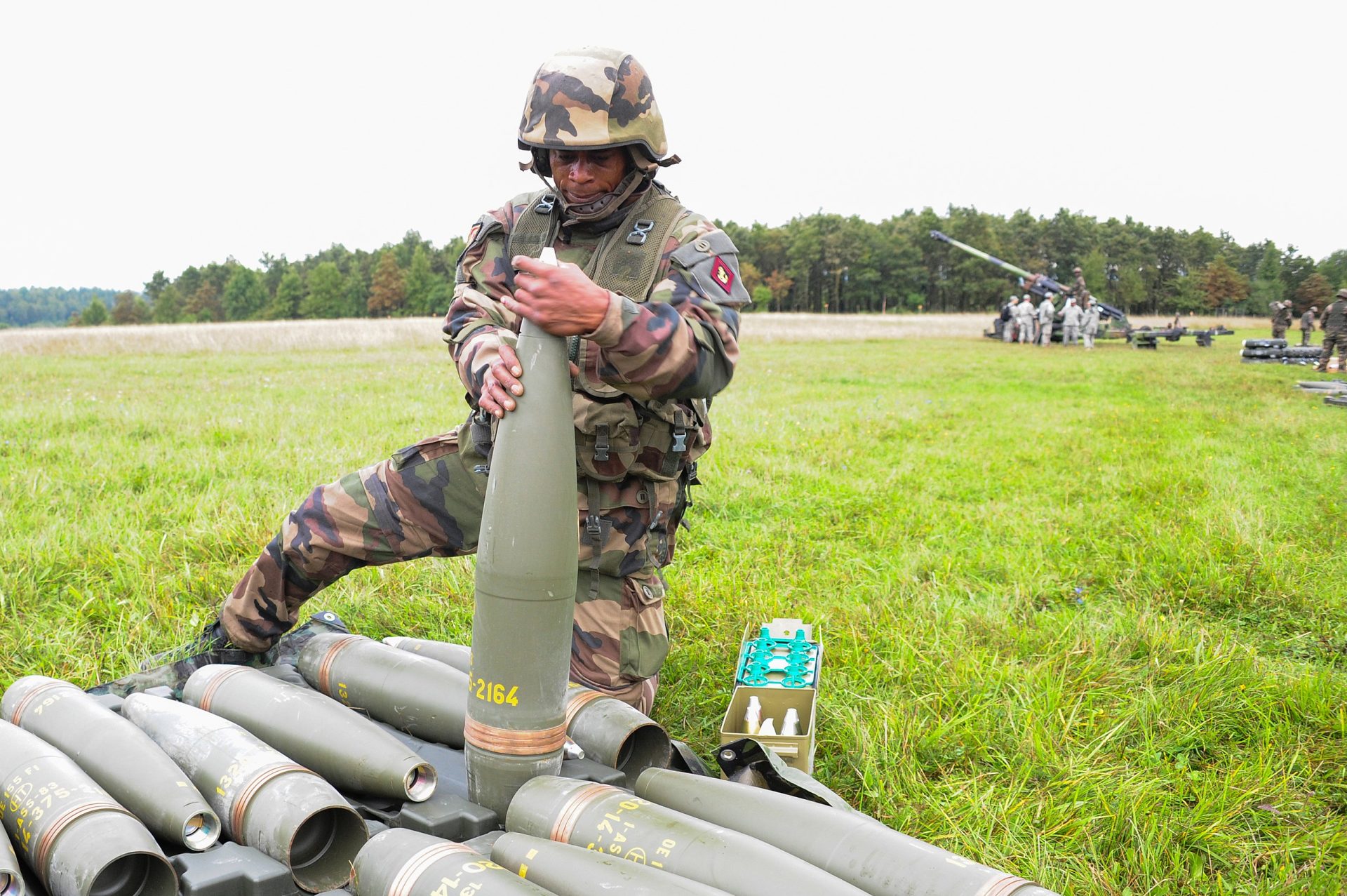
It can’t be done overnight
“Three things are missing to increase ammunition production: money, gunpowder, and TNT (explosives),” Oleksandr Kamyshyn, Ukraine’s minister of strategic industry, told Schemes-RFE/RL reporters.
Besides, companies are cautious about financing further production for purely pragmatic reasons–all orders are short-term. “Most of the orders we receive are for offtake in the next few months. We have no guarantee at all that demand will continue in the years to come. In such a situation, it is necessary to properly consider whether each investment is sustainable in the future,” Pavel Beran, director of special projects at STV Group, explains to investigace.cz.
Commenting on the ammunition shortage issue, Reznikov, the former defense minister of Ukraine, noted that it is difficult for his country to make any long-term commitments because the budget is approved only for a year ahead. If it is a contract with the state or a state-owned company, the process is easier, but it is impossible for the private sector to promise anything in advance. But even if the money does come in, it still takes some time to deliver the required goods. “Ammunition is delivered solely based on payment to those who either have it in stock or can produce it. If the owner or manufacturer already has the ammunition, it will take another two to three months to arrange and ship the goods. If they don’t have it in stock, production will begin, and you essentially pay for production in advance on a first-come, first-served basis, with delivery times ranging from six to eighteen months.”
Another major problem that manufacturers across Europe face is the shortage of raw materials, especially gunpowder and explosives needed to load artillery shells. Unlike ‘Soviet’ caliber ammunition, 155 mm caliber ammunition requires a specific type of gunpowder for production, which is produced by only a few factories worldwide.
One of them belongs to the Czech state-owned company Explosia. Its production capacity has been significantly reduced in recent years. “They are unable to supply us with even the minimum quantity,” explains Director Beran of STV Group.
Explosia’s current capacity is only 450 tons. Like munitions companies, Explosia complains that “it is not possible to double production in a matter of days, weeks, or even months,” according to its spokesman Martin Vencl. Gunpowder and other explosives are made from raw materials, such as cellulose, which are also in short supply. However, the spokesman mentioned that Explosia is planning to double its production, with the earliest possible increase expected by 2026.
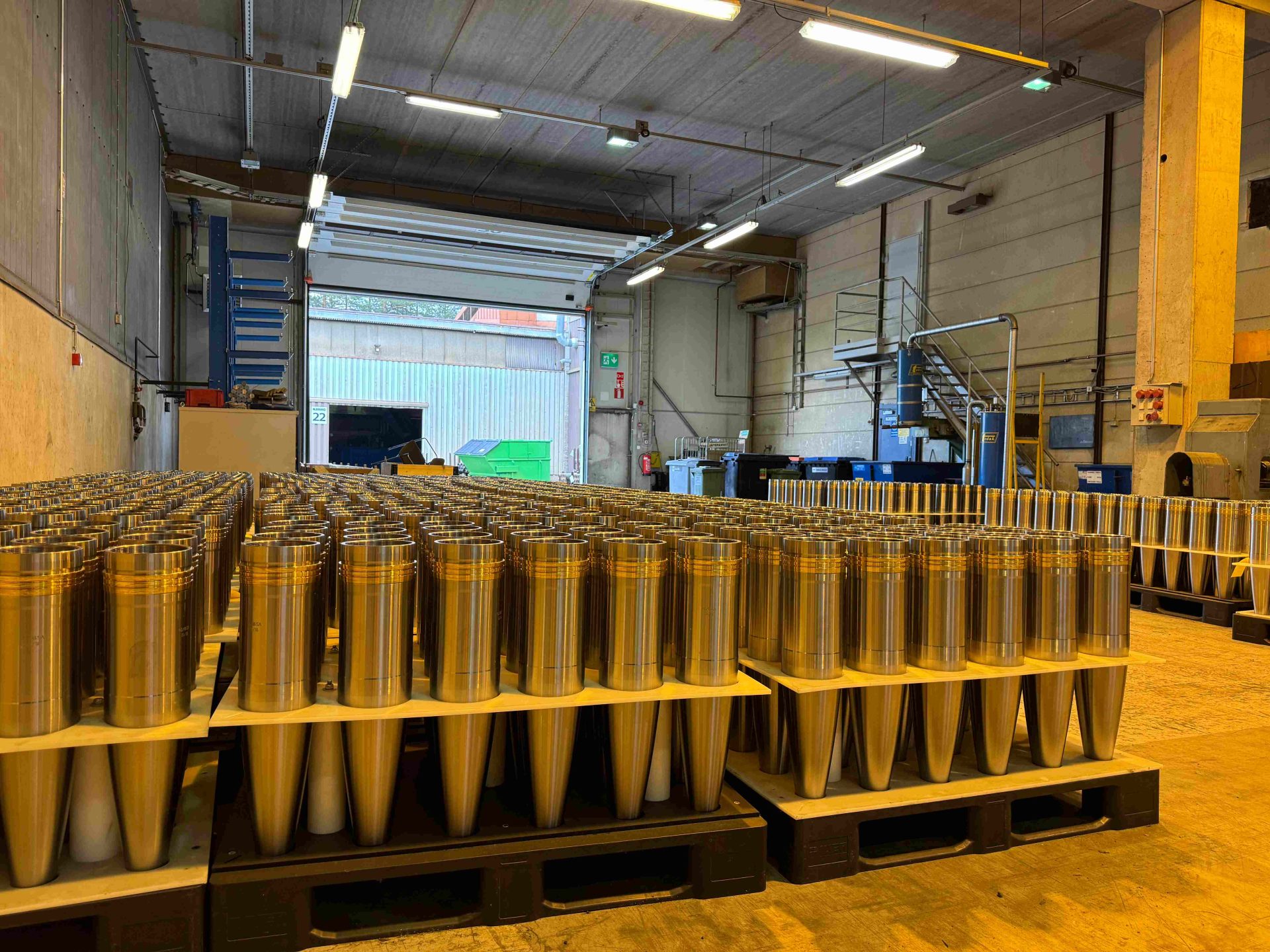
5,000 euros per artillery shell
To add to the problems, customers are never sure how much they will end up paying ammunition manufacturers or owners. It is not just that rising demands are driving up the price of each cartridge. According to Colonel Roman Bobal, Chief of Artillery of the Armed Forces of the Slovak Republic, the difference in margin on a single piece can be hundreds of euros, with the same company offering it to different customers at vastly different prices.
“The powder charge alone costs approximately three thousand euros. The fuse is about a hundred euros and the primer up to ten euros. One bullet thus costs the manufacturer on average, let’s say, 1,200 euros, but the final sale price can vary a lot. All this together, and if we take into account the protective packaging, it ends up costing around five thousand to five and a half thousand euros,” Colonel Bobal explained to ICJK.
For example, the German Ministry of Defence recently ordered two hundred pieces of 155 mm ammunition from Rheinmetall at an average price of €4,399 each. Other munitions companies, such as the Finnish-Norwegian Nammo, now charge up to €6,569 per piece.
CSG Holding spokesman Andrej Čírtek told investigace.cz that if they use the services of intermediaries, the margin is set according to “the scale of the activity and its benefit to the business. All of these margins are normal in the place and time and their amount tends to be below average.” The final amount is then approved by the state. “The intermediary fee normally includes the cost of local intermediaries, which we do not see, but also the cost of transport,” Kopečný calculates. “At the end of the day, we try to keep it within a price level that is standard in Europe.”
When asked if there was any information on how much weaponry European countries supply to Ukraine, national security adviser Tomáš Pojar responded that “there are only estimates” and that he has not seen any “comprehensive table based on all comparable data.”


